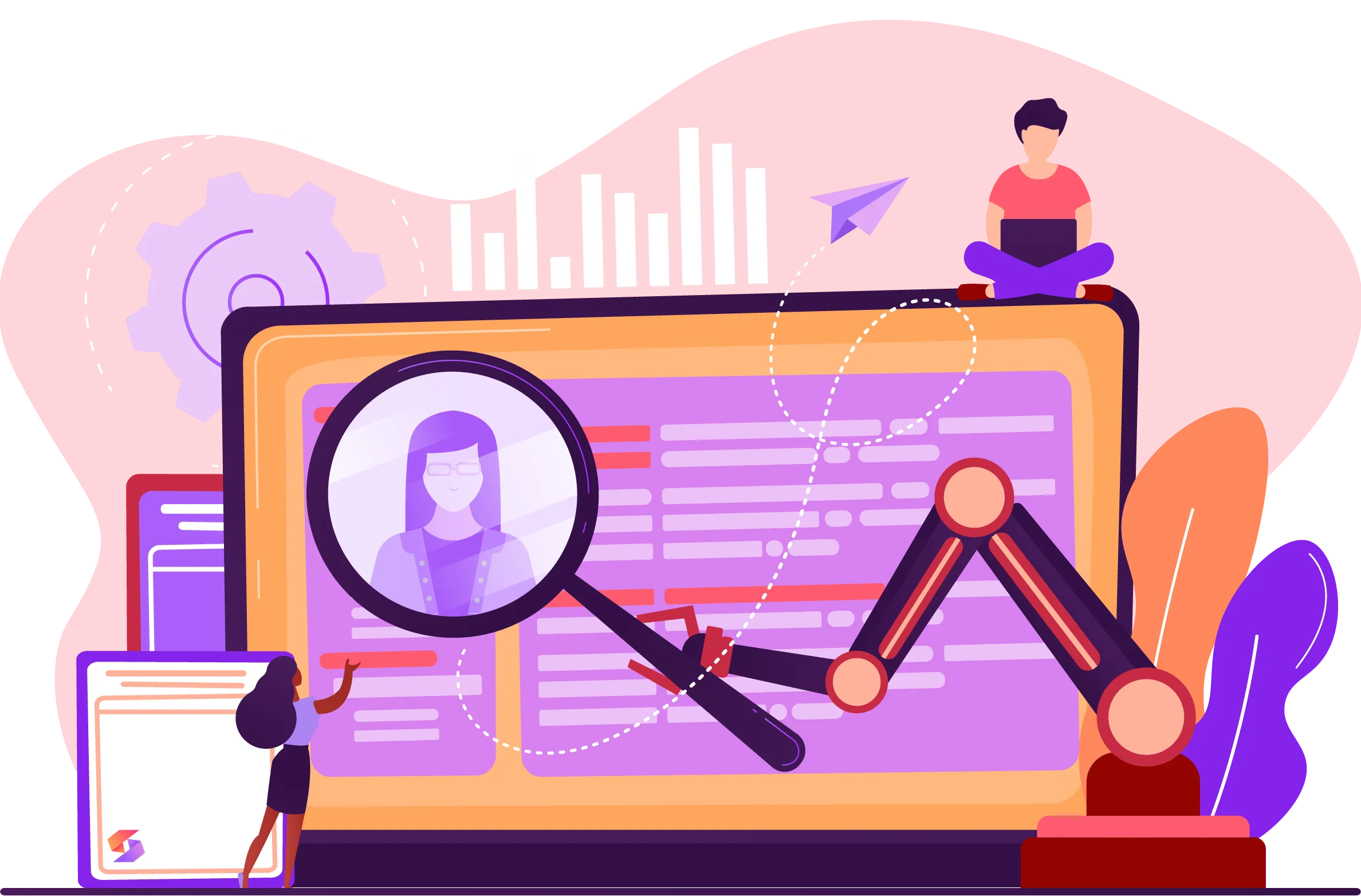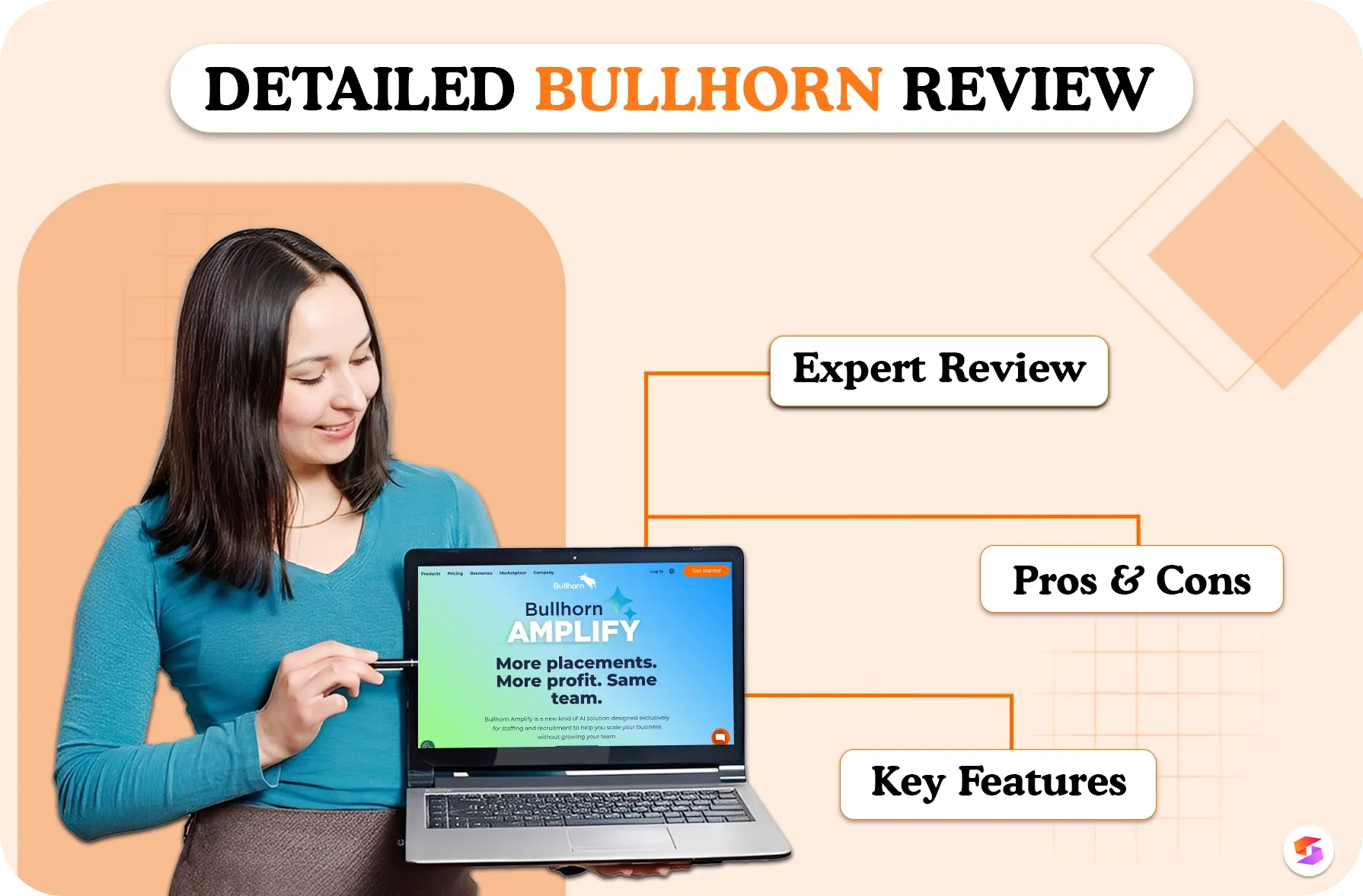Artificial intelligence (AI) has completely changed the recruitment landscape. As for companies aiming to make their way into the top league in the field of hiring and retention, creating an effective data-driven Talent Acquisition Strategy has become pertinent.
Through AI tools like Resume Parser Analytics and predictive analytics, HR professionals are choosing faster, smarter, and better talent for domains where competition is high, such as IT and tech. For example, companies looking to hire AI developers can streamline their hiring process and find the right expertise faster.
What is a Talent Acquisition Strategy?
A talent acquisition strategy is a comprehensive, multi-layered plan for attracting, engaging, and retaining elite-quality candidates best suited with companies' goals. It is not merely a question of filling up currently vacant positions but a strategy for building pipelines of future leaders. Talent acquisition involves sourcing and screening, interviewing, and onboarding and is usually very close to long-term business strategies.
Why AI is Essential in Today’s Talent Acquisition Strategy
AI has transformed the recruiting process from the cumbersome and lengthy manual work into a somewhat faster affair. According to a recent Deloitte survey conducted online, 47% of organizations are already using AI to support their recruiting efforts.
AI can be used in several ways:
- To hire people more quickly
- To find candidates who are more compatible
- To reduce bias and prejudice compared to manually set parameters
Given AI's track record of making better hiring decisions, it's no surprise that the job market is also embracing AI in recruitment tools. Companies are using these insights to improve their hiring processes.
Core Components of an AI-Enhanced Talent Acquisition Strategy Framework
A structured talent acquisition strategy framework that leverages AI ( Artificial Intelligence) consists of several core components:
- Candidate Sourcing: AI tools can analyze market trends and identify where to find qualified candidates.
- Resume Parsing and Screening: Advanced Resume Parser Analytics help streamline resume screening by extracting key skills, qualifications, and experience.
- Candidate Assessment: Predictive analytics tools use past hiring data to assess candidates’ potential and fit.
- Data Analytics: AI-powered data analytics provide insights into metrics like time-to-fill, cost-per-hire, and quality-of-hire, guiding continuous improvement.
Key AI Tools to Optimize Your Talent Acquisition Strategy
Integrating AI tools into your talent acquisition strategy can significantly enhance efficiency and effectiveness. Here are a few AI tools that will help you in your talent acquisition strategy:
AI Resume Parsers
85% of recruiters found that resume parsers significantly reduced their screening time. An AI-driven resume parser can automatically scan resumes to identify key qualifications, skills, and certifications, making it a powerful tool in a Talent Acquisition Strategy. Resume parsers tailored for specific industries, such as IT, are especially valuable, as they parse complex technical terms and match candidates with job requirements accurately.
Predictive Analytics for Candidate Fit
Companies using predictive analytics see a 20% increase in hiring accuracy and a 30% improvement in quality of hire.
Predictive analytics tools use historical hiring data to assess how well a candidate will fit the organization, both technically and culturally. These tools can predict success rates, making it easier for hiring teams to focus on high-potential candidates.
Chatbots for Candidate Engagement
AI-powered chatbots can engage candidates by answering frequently asked questions, guiding them through the application process, and providing status updates. This can enhance candidate experience and keep top talent engaged throughout the recruitment journey.
According to Talent Boar, 55% of candidates appreciate automated communication throughout the hiring process.
Sentiment Analysis Tools
Sentiment analysis tools help companies gauge candidates’ perception of the recruitment process by analyzing feedback. Positive experiences improve employer branding, while negative feedback can be quickly addressed, improving future candidate interactions.
Building an Effective Talent Acquisition Strategy Template with AI
Creating an effective Talent Acquisition Strategy Template involves setting clear goals, defining metrics, and leveraging AI tools at every stage of the recruitment funnel. Here’s how to build a template that includes AI analytics:
- Set Metrics for Success: Define key performance indicators (KPIs) such as time-to-hire, cost-per-hire, and quality-of-hire.
- Identify AI Tools for Each Stage: Assign AI tools like resume parsers, chatbots, and predictive analytics to specific stages in the recruitment funnel.
- Evaluate Performance Continuously: Use AI-driven insights to measure performance, review results, and refine the strategy as needed.
This approach allows HR teams to establish a repeatable, data-backed template that can improve over time.
Integrating Resume Parser Analytics into Your Strategy
Resume Parser Analytics play a crucial role in data-driven recruitment. These analytics tools go beyond extracting data from resumes—they provide insights into candidates’ skills, qualifications, and overall suitability. For IT recruitment, resume parsers can identify technical skills, certifications, and project experience that align with specific job requirements.
According to CareerBuilder, 68% of recruiters believe that analytics-driven resume parsers improve candidate matching.
Companies can use resume parser data to refine job descriptions, assess skills gaps, and improve candidate matching, enhancing the quality and speed of hiring.
Benefits of Using AI Analytics in Talent Acquisition
AI analytics bring numerous advantages to talent acquisition. Here’s how:
- Enhanced Efficiency: AI tools automate repetitive tasks, reducing manual work.
- Data-Driven Insights: With resume parser data and predictive analytics, HR teams make smarter decisions.
- Improved Candidate Matching: AI-driven resume parsers analyze key qualifications, ensuring the right skills match each job role.
- Better Decision-Making: Data-backed insights support better decisions, improving long-term hiring quality.
Best Practices for Implementing an AI-Driven Talent Acquisition Strategy
To maximize AI’s potential in a Talent Acquisition Strategy Framework, follow these best practices:
- Balance AI with Human Interaction: While AI automates processes, maintaining a personal touch enhances candidate experience.
- Ensure Data Privacy Compliance: AI tools should comply with regulations like GDPR to protect candidate data.
- Set Clear KPIs: Define success metrics to track the effectiveness of AI tools, enabling continuous improvement.
Potential Challenges and Solutions in AI Talent Acquisition
Using AI in recruitment comes with challenges, but they can be managed with the right approach:
- Bias and Fairness: AI can inadvertently amplify biases if not carefully managed. Use diverse data sets and regularly monitor algorithms for fairness.
- Data Privacy: Compliance with data privacy laws is essential when using AI tools that handle candidate information.
- Team Training: HR teams need training to maximize the benefits of AI tools effectively.
Boost Your Talent Acquisition with AI-Powered Solutions
Leveraging AI-driven Talent Acquisition Strategy tools like Resume Parser Analytics and predictive analytics offers a powerful way to improve hiring outcomes. A strategic Talent Acquisition Strategy Framework with AI integration can enhance candidate matching, reduce time-to-hire, and optimize the entire recruitment process.
With Skima’s advanced resume parsing and analytics solutions, you can take your talent acquisition to the next level. Skima.ai’s tools are designed to streamline hiring and improve candidate quality, making your Talent Acquisition Strategy more data-driven and efficient.
Ready to transform your hiring process? Explore Skima.ai’s suite of AI-driven talent acquisition tools today and build a stronger, smarter recruitment strategy.
Frequently Asked Questions
1. How can AI-driven resume parsers enhance the efficiency of IT recruitment?
AI-driven resume parsers streamline IT recruitment by automatically extracting and analyzing technical skills, certifications, and experiences from resumes. This automation reduces manual screening time, allowing recruiters to focus on engaging with qualified candidates.
2. What role does predictive analytics play in improving hiring decisions?
Predictive analytics utilize historical hiring data to forecast a candidate's potential success within a role and cultural fit within the organization. By identifying patterns and correlations, these tools assist recruiters in making informed decisions, leading to higher quality hires and reduced turnover rates.
3. How do AI-powered chatbots enhance candidate engagement during the recruitment process?
AI-powered chatbots provide real-time interactions with candidates, answering queries, guiding them through the application process, and offering status updates. This continuous engagement improves the candidate experience, keeps applicants informed, and reduces the likelihood of losing top talent due to communication gaps.




